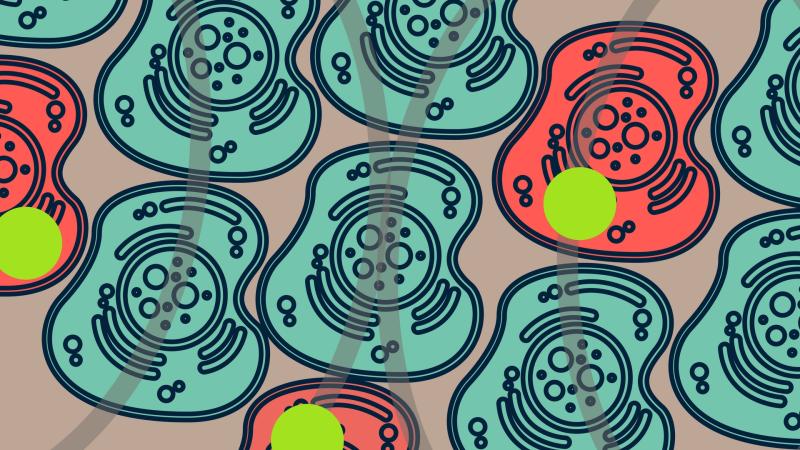
A living cell is a sophisticated system that performs some of the most challenging tasks—sustaining life being one! With each passing day, scientists solve the puzzle of life by studying these cells. What if they could insert tiny machines that can get inside these living cells to observe what happens inside, to discover potential problems, and perhaps to deliver precisely targeted medications? It’s no longer science fiction, but a reality, thanks to the researchers at the Indian Institute of Science (IISc), Bengaluru. In a study published in the journal Advanced Materials, the researchers have demonstrated a novel method of controlling and maneuvering such machines, known as nanomotors, using magnetic fields, inside living cells.
“The tiny motors have the potential to explore new biophysical aspects of a living cell as they can be manipulated inside the cell with great accuracy. It has the potential ability to explore the intracellular environment, especially the organelles of the cell up-close which no other technique can do”, said Mr. Malay Pal, the lead author of the study, in an interview to Research Matters. He is a PhD student at the Centre for Nano Science and Engineering at IISc.
The concept of nanomotors is not new; they have been used in the past to study cells and even deliver substances to cells. Until now, they have been powered by ultrasonic waves—sound waves that are outside the range our hearing ability. However, these ultrasound waves can disturb the cells and their environment, thereby restricting the range of potential applications of the nanomotors they power.
In this study, the researchers have built the nanomotors using polystyrene (a type of polymer) beads and silica. “Fabricated nanomotors are first laid on a silicon wafer and then, a thin layer of magnetic material is deposited over the surface to make them magnetically active,” said Mr. Pal. These nanomotors can now be moved using an external magnetic field instead of ultrasound waves. Since the strength of such a magnetic field is only about 3 mTesla—one-hundredth of what is needed for an MRI (Magnetic resonance imaging) scan—they are too weak to interfere with the normal activities of the cells and tissues, say the researchers.
So how are these nanomotors guided into our cells? “We grow around 100,000 cells in a petri dish overnight. Following this, around a million nanomotors are incubated for 24 hrs with these cells. During this time, the nanomotors are engulfed by the cell through a process called phagocytosis. Then we can manipulate these nanomotors, which are inside cells, using rotating magnetic fields,” explained Mr. Pal, commenting on the experimental setup.
After the experiment, the researchers found that the magnetic nanomotors were successfully internalised by the cells and could subsequently be maneuvered across the intracellular space with no adverse effect on the cell structure. In most cases, they could also observe the motion of the nanomotors inside cells using microscopes. However, in a minority of cases, the nanomotors failed to respond to the external magnetic field because the nanomotors got stuck to other cell components or in rare cases because they got trapped inside cell compartments.
The study has potential applications in cellular biology in helping scientists get a closer look at the cells like never before. “Observing cells using external means might be entirely different from the way these nanomotors can see cells from inside, and that is why nanomotors can be used as a new tool in cell biology”, remarked Mr. Pal.
Also, these nanomotors have tremendous applications in the field of medicine. “We are expecting that it would be possible to measure local fluidity of the cell that can lead to early and swift disease diagnosis. Apart from these applications, we hope, with this advancement, it would be possible to deliver drug at a specific site inside a living cell that would enhance the efficiency of medicine”, Mr. Pal added.
What holds in the future for these marvellous nanomotors? “We are working on our next follow-up project, where we are trying to use this technique to measure the different mechanical properties of the intracellular environment,” signed off Mr. Pal.






